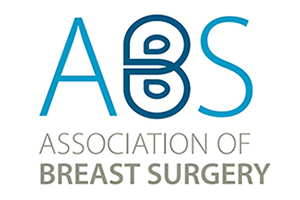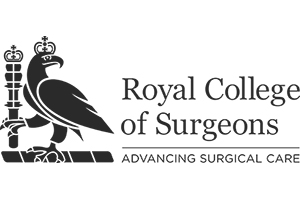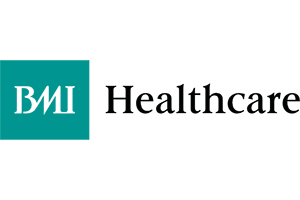BREAST UPLIFT (MASTOPEXY)
Breast uplift (mastopexy) is a surgical procedure which aims to improve the shape of the breast if it sits in a lower position on the chest wall than you wish, resulting in the breast looking empty or “droopy” appearance. This may occur during normal breast development or after pregnancy, breast feeding or significant weight loss. A mastopexy can also be used improve the shape of the breast following removal of breast implants when new ones are not inserted.
A breast lift involves removing excess skin, reshaping the breast to give it more fullness and repositioning the nipple giving a lifted and more youthful appearance. It will not increase the size of your breasts, but simply reshape them. Occasionally a patient may wish to combine a mastopexy with a breast augmentation using a breast implant, to change both the shape and size of their breasts, but it is normally possible to reshape the breasts for most patients with a mastopexy without needing to insert a breast implant at the same time.
THE PROCEDURE
Breast uplift surgery is carried out with you asleep under a general anaesthetic and usually requires a one to two-night stay in hospital. There are many techniques that can be used to perform this surgery, and we can discuss these as well as the risks and benefits if individual techniques and scar patterns during your preoperative consultations.
Excess skin is removed through incisions made in the lower part of the breasts, the breast is reshaped and the nipple height is raised to a more youthful position. Once the surgery is complete the incisions are closed with dissolvable sutures and dressed with sterile dressings. A surgical drain may occasionally be necessary, but only for about 24 hours after surgery and removed the next day.
Following the procedure you will be taken from the operating theatre into the recovery suite where you will be looked after until you are fully awake and any discomfort is well controlled. After this, you will return to your private room, where nursing staff will continue to check your pain control, observations (blood pressure / pulse) and dressings at regular intervals. We will also help you put your post-operative support bra on as soon as you are comfortable to do so.
We will prescribe painkillers for you to take home from the hospital, and you should take these regularly for the first few weeks, although this may vary slightly from patient to patient.
WHAT IS THE RECOVERY TIME?
After a breast uplift you are likely to have some pain or discomfort which can be well controlled for most patients. Swelling and bruising of your breasts is very common but temporary and should largely subside after the first two to three weeks during your breast reduction recovery, but it may take three to four months for all of the swelling to settle completely.
I recommend that patients wear a well fitted support bra for a minimum of six weeks after surgery, and will give you information about the style of bra which is most appropriate. This should be worn night and day, but can be removed for washing and showering. Many patients find the support bra very comfortable, and may continue to wear a similar bra in the future after surgery especially when undertaking exercise or sporting activities.
You will receive a post-operative telephone call from the specialist cosmetic nurse I work with a few days after your discharge from hospital to check you are well, and will normally meet them a week after surgery to perform a wound check and change your dressings. We will provide you with some post-operative wound support tape at this stage and encourage you to use this for the first six weeks to help support the wound whilst it is healing. I will normally meet you about two weeks after your operation to make a further check that all is well and then again about three months later to assess your outcome with you once all of your swelling has subsided. We will meet more regularly if there are any concerns about your wound healing.
During the early part of your recovery, you must avoid strenuous exercise, heavy lifting, swimming vacuuming and gardening, normally for a period of four to six weeks after surgery. You should only resume driving when you are confident that you can safely perform an emergency stop without experiencing discomfort, but for many patients this is possible after about two to three weeks. The length of time you will need to take off work will depend on your type of employment, and we can discuss this with you during your pre-operative consultation to allow you to plan timing of your surgery.
ARE THERE ANY RISKS/COMPLICATIONS?
Breast uplift surgery is a commonly performed and generally safe procedure. However, all surgery carries an element of risk. The risks can include:
Bleeding and developing a collection of blood in your breast called a haematoma. If this were to happen it normally occurs in the first 24 to 48 hours after surgery and requires a second operation to remove the haematoma. It is important to avoid any strenuous movements of lifting over this time for this reason. It is also important to avoid taking anti-inflammatory pills (e.g. ibuprofen) or non-prescription medication for a week before and after surgery, as they can slightly increase the risks of bleeding too.
Developing a blood clot or DVT, usually in a vein in the lower leg. We will provide you with surgical stockings and lower limb compression devices to minimise the risk of this, as well as asking you to stop taking the pill or any HRT before surgery for one month.
Problems with wound healing or infection may occur and require additional time in clinic for follow-up and wound checks. Problems may also occur with blood supply to the nipple or the breast tissue requiring additional follow-up consultations or more rarely additional surgery. Very rarely, part or all of the nipple may not survive if it has a compromised blood supply.
Sensation changes in different parts of the breast including the nipple – these areas may become more or less sensitive than before. Hypersensitivity will tend to settle over the months after surgery but occasionally numbness can be permanent.
Minor differences or asymmetry between your breasts after this surgery are inevitable, and most people will have a degree of difference between their breasts before their surgery even if they are not aware of it! This procedure will not produce a perfectly symmetrical outcome between your breasts, but the differences will be very minor and should not prevent you from getting clothing (including a bra) to fit comfortably.
Future breast enlargement or “droop” may also be seen, particularly if your weight increases in the years after your breast reduction, or if you become pregnant.
It is occasionally necessary to remove a small amount of breast tissue with a breast uplift, so as to allow wounds to be closed without any tension. I will send any tissue removed for pathological analysis to ensure that none of it contains an unexpected breast cancer. I routinely recommend mammograms for all patients over the age of 40 years old for patients undergoing this type of surgery for this reason, which is in keeping with best practise guidance from the national breast and plastic surgical societies (ABS and BAPRAS).
Discussion with Jamie is important to answer any questions that you may have. For information about any additional conditions not featured within the site, please contact us for more information.









